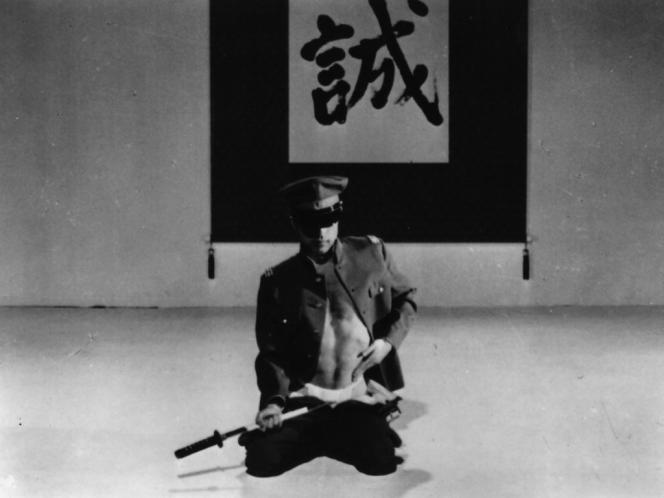Find all the episodes of the series “A film and then nothing” here.
“On February 28, 1936 (i.e. the third day of the February 26 incident), Lieutenant Shinji Takayama of the Konoe Transport Battalion – shocked to learn that his closest comrades were among the mutineers and indignant at the idea of seeing imperial troops attacking imperial troops – took his orderly sword and ritually disembowelled himself in the eight-mat room of his private house, Yotsuya sixth residence of Aoba-chô. His wife, Reiko, followed his lead and stabbed herself. » It is with these lines, which summarize all that will follow, that begins the novella of Yukio Mishima yukokutitle translated by Patriotism and published in 1961.
The incident in question is the coup attempt fomented by a handful of Japanese ultra-nationalist officers on the morning of February 26, 1936. The conspirators notably assassinated two ministers and a general, and occupied various official buildings in Tokyo before being defeated, on the Emperor’s orders, by the Imperial troops who remained loyalists. The event was, among other cinematographic evocations, at the center of Yoshishige Yoshida’s film, Rebellionin 1973. Mishima’s short story was a way of emphasizing the symbolic importance, for him, of this historical episode, felt by nationalist circles as an open wound in the history of Japan.
Concise, implacable, the short story unfolds the couple’s gestures until the fatal outcome. The lieutenant returns home, greeted by his wife. He explains to her his project of suicide by disembowelment (seppuku). She replies that she wishes to accompany him in death. The man and the woman are getting ready. They make love. Then the young officer opens his stomach. He is finished off by Reiko, who, after putting on make-up, kills herself in turn. A great admirer of the work of Georges Bataille, Mishima wrote in 1965: “I was able, by placing the incident of February 26 in the background, to imagine a circumstance in which extreme physical pleasure and extreme physical suffering are constituted by the same principle, and thereby result in supreme bliss. »
twenty-seven minutes
Mishima decides to make a film adaptation of his short story five years after its publication. Cinema is no stranger to him. He played the lead role in The Guy of the Cold Winds (Karakkaze Yaro), by Yasuzo Masumura, in 1960 (he will later make a brief appearance in The Black Lizardby Kinji Fukasaku, in 1968).
You have 62.06% of this article left to read. The following is for subscribers only.
